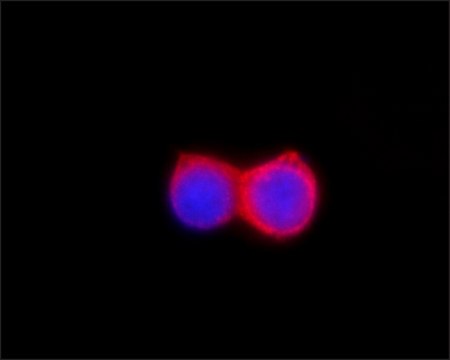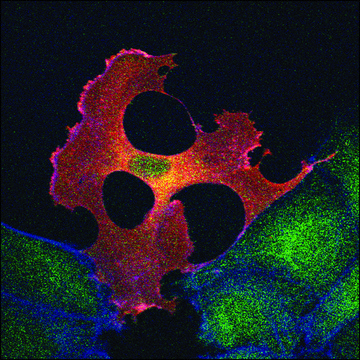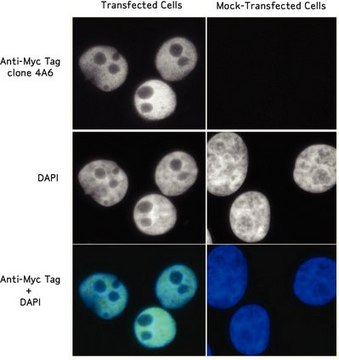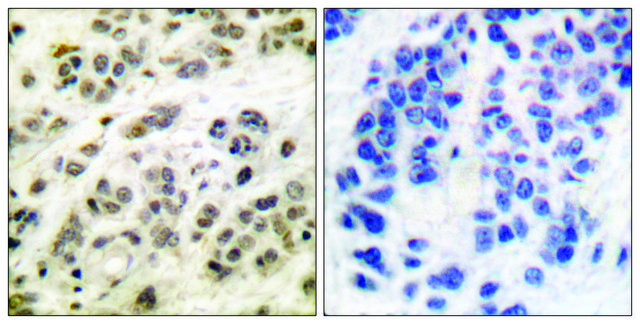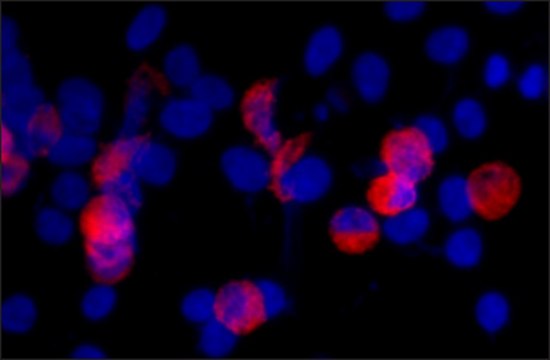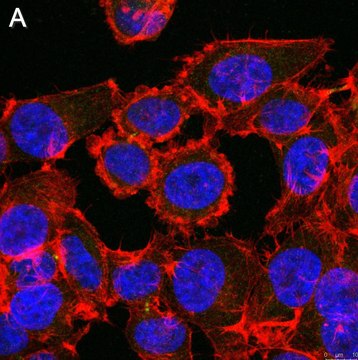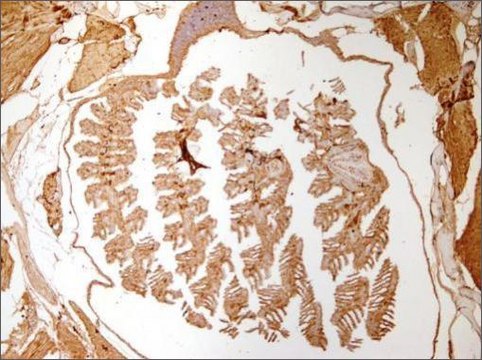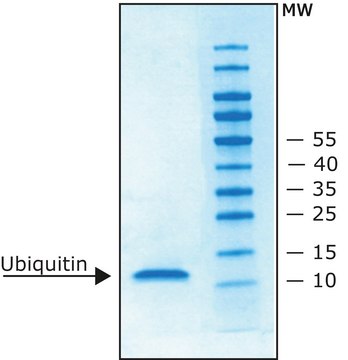SAB2702192
Monoclonal Anti-Myc tag antibody produced in mouse
clone GT0002, affinity isolated antibody
Sign Into View Organizational & Contract Pricing
All Photos(3)
UNSPSC Code:
12352203
NACRES:
NA.43
Recommended Products
biological source
mouse
Quality Level
conjugate
unconjugated
antibody form
affinity isolated antibody
antibody product type
primary antibodies
clone
GT0002, monoclonal
form
buffered aqueous solution
concentration
1mg/mL
technique(s)
immunoprecipitation (IP): suitable
indirect immunofluorescence: suitable
western blot: 5000-20000
isotype
IgG1
shipped in
wet ice
storage temp.
−20°C
target post-translational modification
unmodified
Immunogen
The immunogen used to generate this antibody corresponds to Myc tag
Application
Suggested starting dilutions are as follows: ICC/IF: 1:100-1:2000, IP: 1:100-1:500, WB: 1:5000-1:20000. Not yet tested in other applications. Optimal working dilutions should be determined experimentally by the end user.
Features and Benefits
Evaluate our antibodies with complete peace of mind. If the antibody does not perform in your application, we will issue a full credit or replacement antibody. Learn more.
Other Notes
Purification: Affinity purified by Protein G
Physical form
Phosphate-buffered saline, no preservative added.
Disclaimer
Unless otherwise stated in our catalog or other company documentation accompanying the product(s), our products are intended for research use only and are not to be used for any other purpose, which includes but is not limited to, unauthorized commercial uses, in vitro diagnostic uses, ex vivo or in vivo therapeutic uses or any type of consumption or application to humans or animals.
recommended
Product No.
Description
Pricing
WGK
nwg
Flash Point(F)
Not applicable
Flash Point(C)
Not applicable
Regulatory Information
常规特殊物品
Certificates of Analysis (COA)
Search for Certificates of Analysis (COA) by entering the products Lot/Batch Number. Lot and Batch Numbers can be found on a product’s label following the words ‘Lot’ or ‘Batch’.
Already Own This Product?
Find documentation for the products that you have recently purchased in the Document Library.
Hai-Lin Dong et al.
NPJ genomic medicine, 6(1), 1-1 (2021-01-06)
Sorbitol dehydrogenase gene (SORD) has been identified as a novel causative gene of recessive forms of hereditary neuropathy, including Charcot-Marie-Tooth disease type 2 and distal hereditary motor neuropathy (dHMN). Our findings reveal two novel variants (c.404 A > G and c.908 + 1 G > C) and one
Kai He et al.
Nature communications, 9(1), 3310-3310 (2018-08-19)
Tubulin polyglutamylation is a predominant axonemal post-translational modification. However, if and how axoneme polyglutamylation is essential for primary cilia and contribute to ciliopathies are unknown. Here, we report that Joubert syndrome protein ARL13B controls axoneme polyglutamylation, which is marginally required
Mario Torrado et al.
Scientific reports, 12(1), 7284-7284 (2022-05-05)
The finding of a genotype-negative hypertrophic cardiomyopathy (HCM) pedigree with several affected members indicating a familial origin of the disease has driven this study to discover causative gene variants. Genetic testing of the proband and subsequent family screening revealed the
Mario Torrado et al.
NPJ genomic medicine, 6(1), 21-21 (2021-03-06)
Here we report an infant with clinical findings suggestive of Jervell and Lange-Nielsen syndrome (JLNS), including a prolonged QT interval (LQTS) and chronic bilateral sensorineural deafness. NGS analysis revealed one known heterozygous pathogenic missense variant, KCNQ1 p.R259L, previously associated with
Cefan Zhou et al.
Autophagy, 16(10), 1786-1806 (2019-11-08)
Macroautophagy/autophagy plays key roles in development, oncogenesis, and cardiovascular and metabolic diseases. Autophagy-specific class III phosphatidylinositol 3-kinase complex I (PtdIns3K-C1) is essential for autophagosome formation. However, the regulation of this complex formation requires further investigation. Here, we discovered that STYK1
Our team of scientists has experience in all areas of research including Life Science, Material Science, Chemical Synthesis, Chromatography, Analytical and many others.
Contact Technical Service